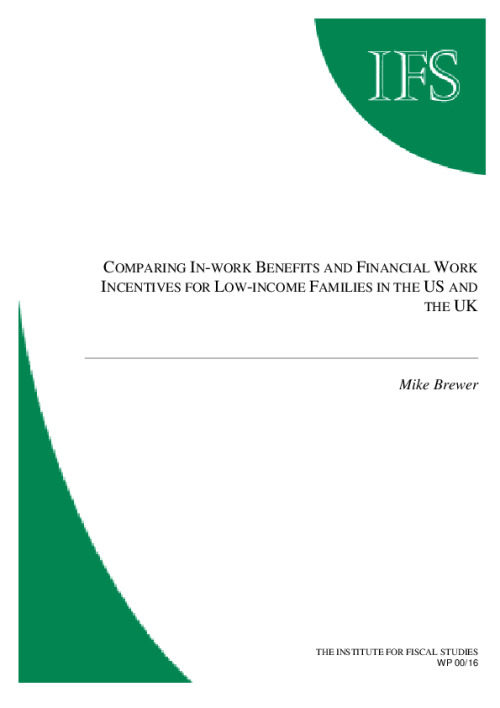The goals of income transfer systems in the US and the UK for low-income families are to reduce poverty and welfare dependency and encourage work. Both the US and UK have made in-work benefits a key part of their strategy through the Earned Income Tax Credit (EITC) and Working Families' Tax Credit (WFTC) respectively. But although similar in aims, there are significant differences in how the WFTC and EITC are structured and how they work operationally. In both countries, the combination of in-work benefits and welfare benefits produces a theoretical budget constraint with good financial incentives for lone parents to take a minimum wage job, but poor incentives to increase earnings beyond that. Help with housing costs and childcare costs reduce financial work incentives in both countries. Two further factors make direct comparisons of financial work incentives difficult. First, little is known about take-up rates of in-work and other welfare benefit rates in the US and UK, but recent falls in the numbers of US welfare benefits suggest that take-up rates may vary considerably between and within countries. Second, the differences in assessment and payment mechanisms between the EITC and the WFTC mean that low-income families in the UK and US may respond very differently to apparently similar financial incentives.










